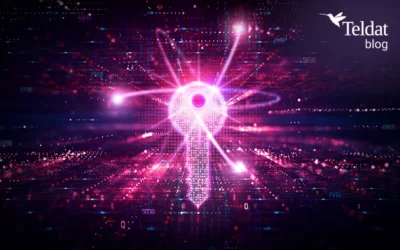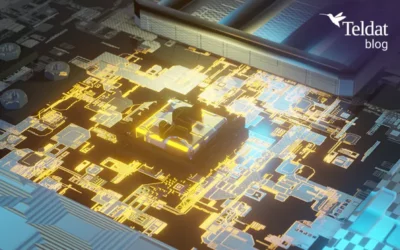 As we previously mentioned in an article published in June 2019, the Bitcoin did not create a new computer technology but integrated a series of pre-existing techniques in a revolutionary manner. The possibilities this protocol could bring were soon condensed in a new disruptive paradigm known as BLOCKCHAIN.
As we previously mentioned in an article published in June 2019, the Bitcoin did not create a new computer technology but integrated a series of pre-existing techniques in a revolutionary manner. The possibilities this protocol could bring were soon condensed in a new disruptive paradigm known as BLOCKCHAIN.
But what is Blockchain exactly?
In its strictest sense, Distributed Ledger Technology (also known as DLT or LEDGER) is a set of data:
- Arranged chronologically.
- That can be encrypted or not. In fact, and although it may appear otherwise, Bitcoin data are not encrypted.
- Is collected in information packages known as blocks.
- Is analyzed by means of cryptographic algorithms to check that it has not been modified after it was entered in the system, nor within a block or between them.
To upload information in the ledger, a consensus must be reached (distributed trust model). This consensus can be the solution to a “mathematical puzzle” with more or less computational requirements. For instance, there is the Proof-of-Work system (PoW), which obtains a certain hash code through the use of brute-force mechanisms; the Proof-of-Stake system (PoS), which focuses on assessing the level of commitment of the people responsible for reaching consensus; or the Proof-of-Importance (PoI), which is linked to the reputation of the network itself. Variants of the Byzantine Agreement, which establishes the relationship between the parties by assuming a certain degree of disloyalty or computational errors, can also be used. This is, without a doubt, Blockchain’s most complex element.
All transactions recorded in a blockchain have been cryptographically signed by means of asymmetric key algorithms. Nowadays, given the size of keys (i.e., 2,048 bits for RSA), these systems are unassailable.
A same peer network that carries out several transaction-related operations (such as the loading, validation and updating of the Ledger) and keeps a local copy of the files on distributed accounting. Nodes provide backup and support to one another, meaning the attack on one or several will not lead to a system crash.
And, since the appearance of the Ethereum protocol, Smart Contracts. These allow each node to execute a “Turing machine” (first unveiled by Alan Turing in 1936) or, in layman’s terms, to process a code that is similar to the one a computer equipped with a storage and control unit would run. These components are user-enabled or activated by means of event detection. Bitcoin offers a very rudimentary version of this feature.
Blockchain, business logic and management system
As a result, a management system and a blockchain can interact with very few limitations (meaning the end-user can benefit from what they do best). The proposed scheme would be as follows:
-
- The Blockchain Model, with users, processed assets, structure and content of transactions and events, and the model to guarantee the system’s integrity and safety.
-
- The Business Logic, including financial and technical transactions, the correlation between internal and external managing events, and the consensus algorithms used.
-
- A managing system whose structure is capable of drawing a distinction between persistence (model), calculus and processing (controller), and display (view).
If we take the Blockchain technology a step further, it could be said that it is shifting the Internet from a data management network to a value management one. However, this would need to be explained in more detail, in another blog post.

























